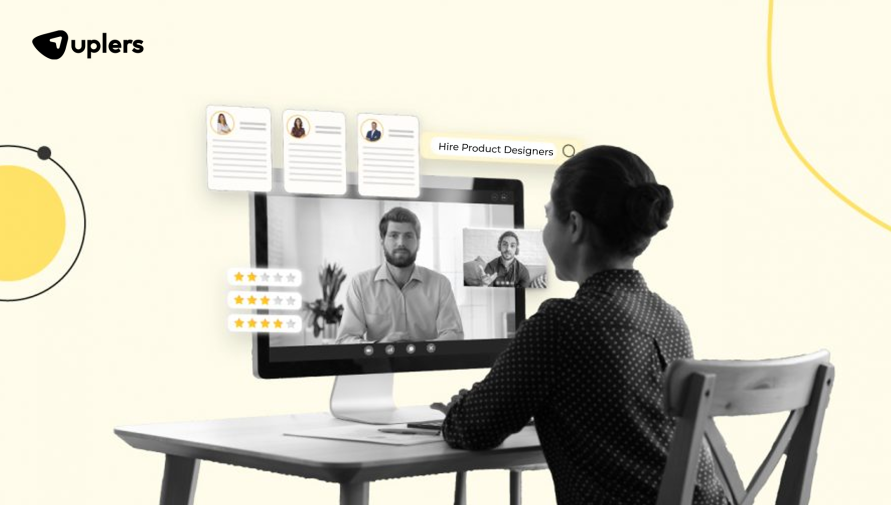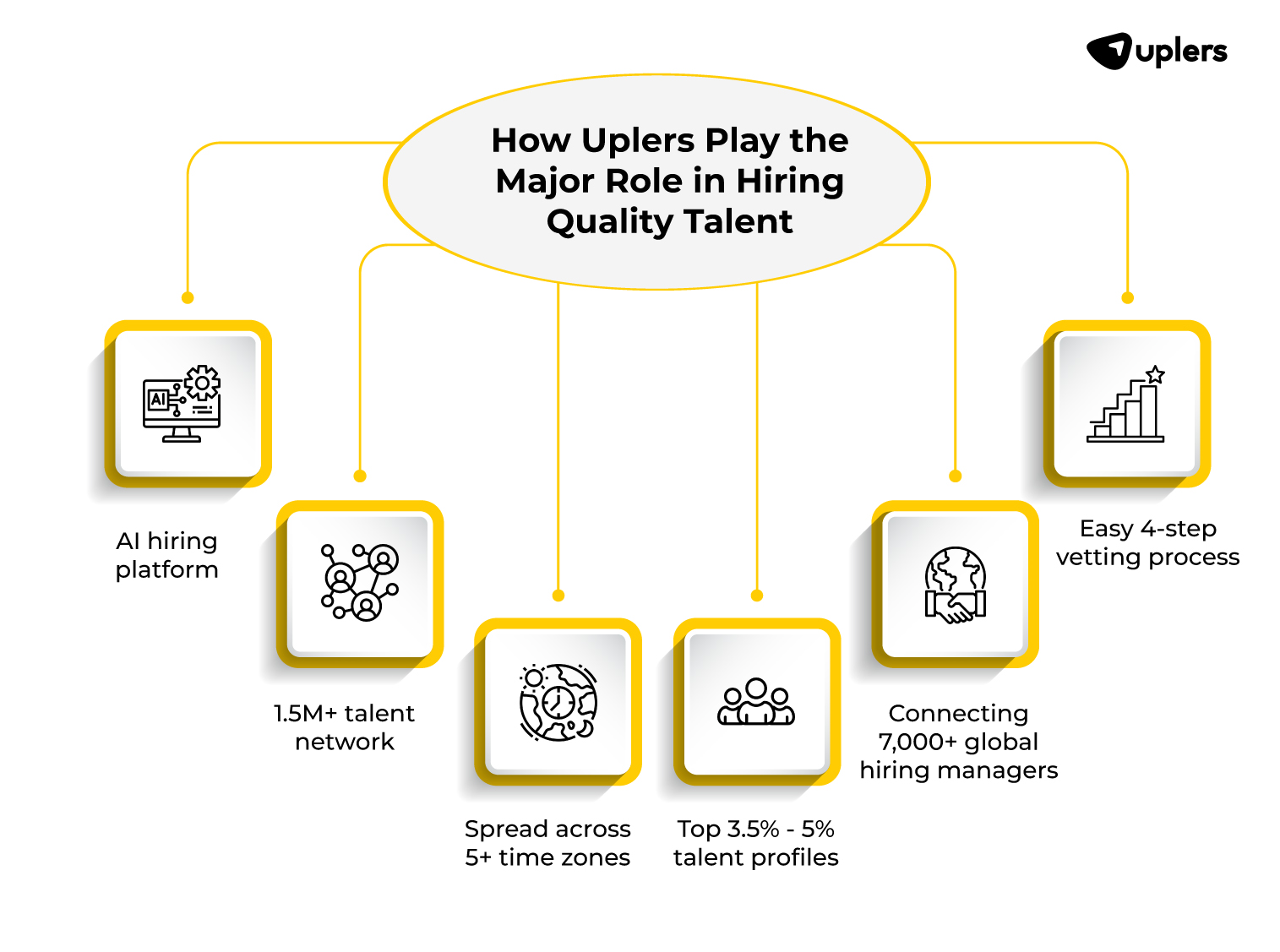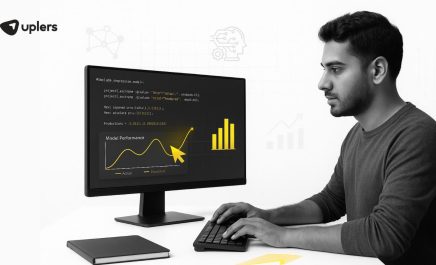Hire Product Designers Who Blend UX Thinking with Business Goals
- Shachi Dixit
- July 21, 2025
- 4 Minute Read

In the SaaS-driven world one can never overlook or stop emphasizing the importance of a well-designed product. It’s not only about a beautifully enhanced interface but more about being a strategic asset. As markets are getting crowded and users are expecting instant value, products must be designed in such a way that they serve business goals, drive user retention, and support monetization.
The shift in user expectations and the concurrent market dynamics has created a new generation of hybrid professionals that think more like product owners. They don’t simply craft wireframes but understand conversion metrics, roadmap priorities, and the impact of every design decision on revenue.
As a hiring manager, founder, or product leader, the challenge ahead of you is crystal clear – hire product designers that don’t just make things look good, but also drive measurable outcomes.
Why UX-Only Isn’t Enough: The Shift Toward Strategic Product Design
While UX design used to primarily focus only on usability and flow, the modern product designers need to now be business collaborators. They work alongside product managers and engineers ensuring that user needs align with business goals.
This evolution is largely driven by:
- Product-Led Growth (PLG) strategies are rising.
- The requirement for lower churn and a quicker time-to-value (TTV).
- Metrics like trial conversion, feature adoption, and monthly active users are turning into important success criteria.
This is why startups or scale-ups no longer hire only for aesthetics. In the present-day context the demand to hire product designers is for those who:
- Understand product strategy
- Can influence roadmap decisions
- Design with KPIs in mind
As product complexity expands, these designers bridge the gap between customer empathy and company growth.
Key Traits of Designers Who Think Like Product Owners
Exceptional product designers in 2025 are those that combine design craft with a strategic approach. When you assess candidates, look beyond their ability to execute usability tests or create pixel-perfect user interfaces. Keep an eye out for their product ownership mindset such as:
User-first but business awareness
They balance user needs with viability and profitability.
Comfort with data
They utilize metrics like drop-off rates, NPS, and usage heatmaps to inform iteration.
Roadmap collaboration
They don’t wait for speculations but help shape them.
Feature trade-offs
They know how to scope MVPs with uncompromised experience.
Transparency in design process
They share rationale and not just results.
When you hire product designers with this mindset they don’t merely solve problems, but help prioritize the problems that need the right solutions. And this is highly critical if you are scaling a product that needs every feature to prove its ROI.
Evaluating Portfolios for Business Impact, Not Just Visual Polish
A flashy UI or a sleek animated reel can look very impressive, but it doesn’t always translate to high product value. In the portfolio review stage, shift your attention towards business-centric design thinking.
Here’s what you must look for:
Problem framing
Did the designer articulate the challenge taking into consideration user pain + business needs?
Metrics impact
Do they mention conversion rates, engagement improvements, or retention gains?
Collaboration narrative
Do they co-own outcomes with product managers, engineers, or analysts?
Iteration story
How have they used user or usage data to evolve their designs?
Result-first thinking
Can they exhibit how design decisions supported the company’s overall growth objectives?
If in case you are considering hiring remote product designers, the portfolio depth becomes one solid area of importance. Without in-person collaboration you need proof that they have worked independently on projects with measurable and strategic outcomes.
Interview Questions That Reveal Product Thinking and ROI Awareness
To uncover strategic product thinking in interviews, you need to go beyond the process questions. Ask them about impact, trade-offs, and decision-making with these type of questions:
Tell me about a time your design impacted a business KPI. What changed and how?
This will reveal their ability to tie design with revenue or growth.
How do you prioritize and incorporate user feedback when planning a redesign?
It tests their ability to balance anecdotal inputs with tangible data.
Have you ever disagreed with a product manager or engineer on product direction? Why and what was the outcome?
This reflects ownership and maturity in cross-functional decision-making.
What role should a designer play in defining product scope?
This helps to determine whether they think upstream or are only execution-focused.
If this process works you can have it on a repeat mode by keeping a checklist to hire UX designers that puts together strategic thinking, data fluency, and collaborative behaviors.

Hiring Designers Who Drive Growth, Not Just Usability
In 2025 and the years to come, product design is a growth strategy. The SaaS products that thrive are the ones built by teams who treat design as a core business functionality – not simply a finishing layer.
You are bringing in on a force multiplier when you hire product designers with a product ownership mindset. These designers do more than wireframes – they ask better questions, prioritize the right features, and help release products that users love and help your business grow.
As the product designer salary is on an uphill, to be selective in hiring talent is the key to succeed in globally emerging markets. You need creators that understand the cost of delay, the value of iteration, and how their work uplifts your business strategy.
All in all, your next great hires shouldn’t simply be a designer – but a product co-owner.






